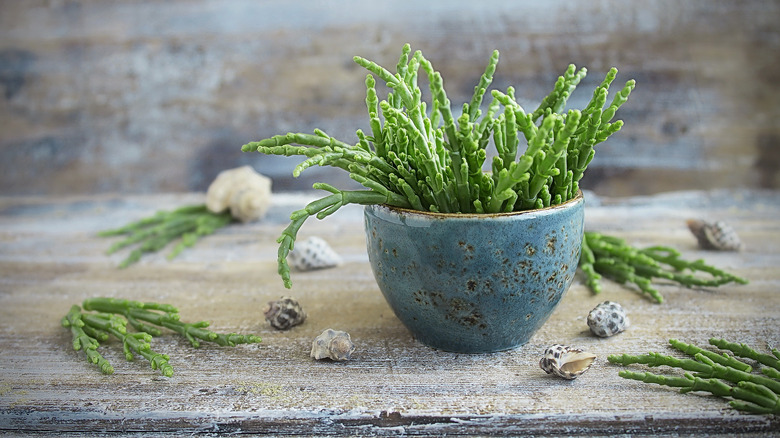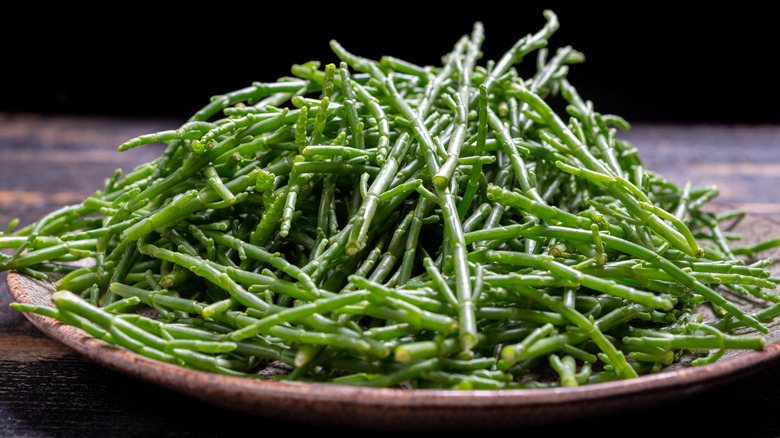The Salty Snack Known As The 'Asparagus Of The Sea'
Forests get a lot of credit as havens of forage-friendly comestibles, but dense woods lined with babbling brooks aren't the only places to find wild vegetables. Sea shores, marshlands, and even deserts are teeming with edible plants you might pass right by if you aren't looking. With that in mind, the next time you're strolling near an estuary, a salty marsh, or a mud flat, keep your eyes peeled for a spindly green plant with stalks like twiggy cacti.
Marsh samphire — also called sea beans, glasswort, pickleweed, picklegrass, and all sort of other names — is a succulent of the Salicornia family that grows in the wet sand on beaches throughout North America and Europe. It's salty, crunchy, and delicious when eaten raw. If you decided to cook it, you might notice its similarity to asparagus, hence its "sea asparagus" nickname. Here's where to find it and how to prepare it.
Scour your nearest coastline
If you're hunting for Salicornia in North America, you'll have the best luck in the summer. The resilient plant, which the James River Foundation likens to "a clump of pickles," is abundant along salty coastal areas stretching from Canada to Mexico on both the East and West Coast, and is often sold at farmers markets. The plant tastes best when it's a vibrant green — the red hue it takes on in the fall is a sign that it's past its foraging date.
If you happen across it, don't get so excited that you uproot the whole plant. Instead, clip off the thinnest, firmest shoots with your fingers or a pair of scissors, leaving the thicker, yellower stems in the ground. Once you have your bounty, feel free to munch away; the tiny bulbs in the stalk are naturally flavorful thanks to the saltwater they grow in, lending them a "distinctively crisp and salty taste," as BBC has it. If you have some left over after snacking, here are some ways to let it shine.
Pickled, sautéed, tossed in a salad
Salicornia is nearly as adaptable in recipes as it is to its environment of strong winds and crashing tides. Like asparagus, the perennial plant is delicious both raw and cooked, and doesn't need much time to prepare.
If you don't feel like firing up the stove, you might try tossing a handful of chopped stalks in a salad after quickly blanching them in boiling water and dropping them in an ice bath. We think they'd be delightful as a replacement for green beans in a niçoise salad.
You might want to skip the oven, lest you overcook the delicate stems, but you could certainly sauté Salicornia with butter, lemon, and red pepper flakes for an easy side dish. You could also add them to a frittata, dunk them in hot oil for a deep-fried snack, or introduce them to your next stir fry. If you're following a recipe, just be sure to adjust the salt accordingly, as Salicornia is naturally briny.


